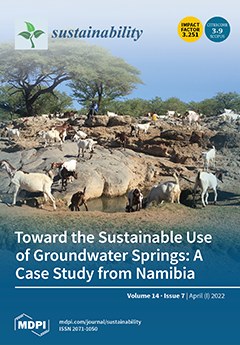The risk of natural disasters has increased over the last few decades, leading to significant economic losses across the globe. In response, research related to the risk of economic loss due to natural disasters has continued to develop. At present, insurance remains the
[...] Read more.
The risk of natural disasters has increased over the last few decades, leading to significant economic losses across the globe. In response, research related to the risk of economic loss due to natural disasters has continued to develop. At present, insurance remains the best solution for funding such losses. The purpose of this study is to analyse the development of insurance as an alternative for sustainable economic recovery after natural disasters. The data used are articles obtained from several sources indexed by Scopus and Google Scholar. The search resulted in a final database of 266 articles, culled from a total of 813 articles before the final selection was made. The articles used are publications from 2000–2021 (including 21 database periods), to which we applied a systematic literature review method. Identification and evaluation of the articles was carried out through visualization of their content, development of disaster risk insurance, and availability of disaster risk insurance by country and type. The identification results show that the relationship between the word “insurance”, according to visualization using the VOSviewer software, has a relationship with other clusters including the words “disaster”, “disaster insurance”, “risk”, “natural disaster”, “study”, “recovery”, and “disaster risk financing”. The 266 articles studied show that there was an annual increase in the number of published scientific papers over the period 2000–2021. The types of disaster risk insurance, based on a review of the articles, include agricultural insurance, flood insurance, property insurance, earthquake insurance, crop insurance, and natural disaster insurance. In addition, of the six types of disaster risk insurance, three have been discussed the most in the last five years, namely, agricultural, flood, and property insurance. The increase in the number of scientific publications discussing these three types of disaster risk insurance has been influenced by climate change. Climate change causes a significant increase in the potential for disasters and is accompanied by an increased risk of loss. This review is expected to provide information and motivation for researchers related to the development and importance of disaster risk insurance research. Research in the risk sector for disaster losses due to climate change should be continued in the future in order to help fund economic recovery, especially throughout the insurance sector. With continuous research on disaster risk insurance, it is hoped that the resulting information can be more effective in determining insurance risk and in helping local economies and communities recover after the advent of a disaster. With the availability of funds for post-disaster recovery, the regional economy affected by the disaster can be immediately restored and recovered from adversity.
Full article





